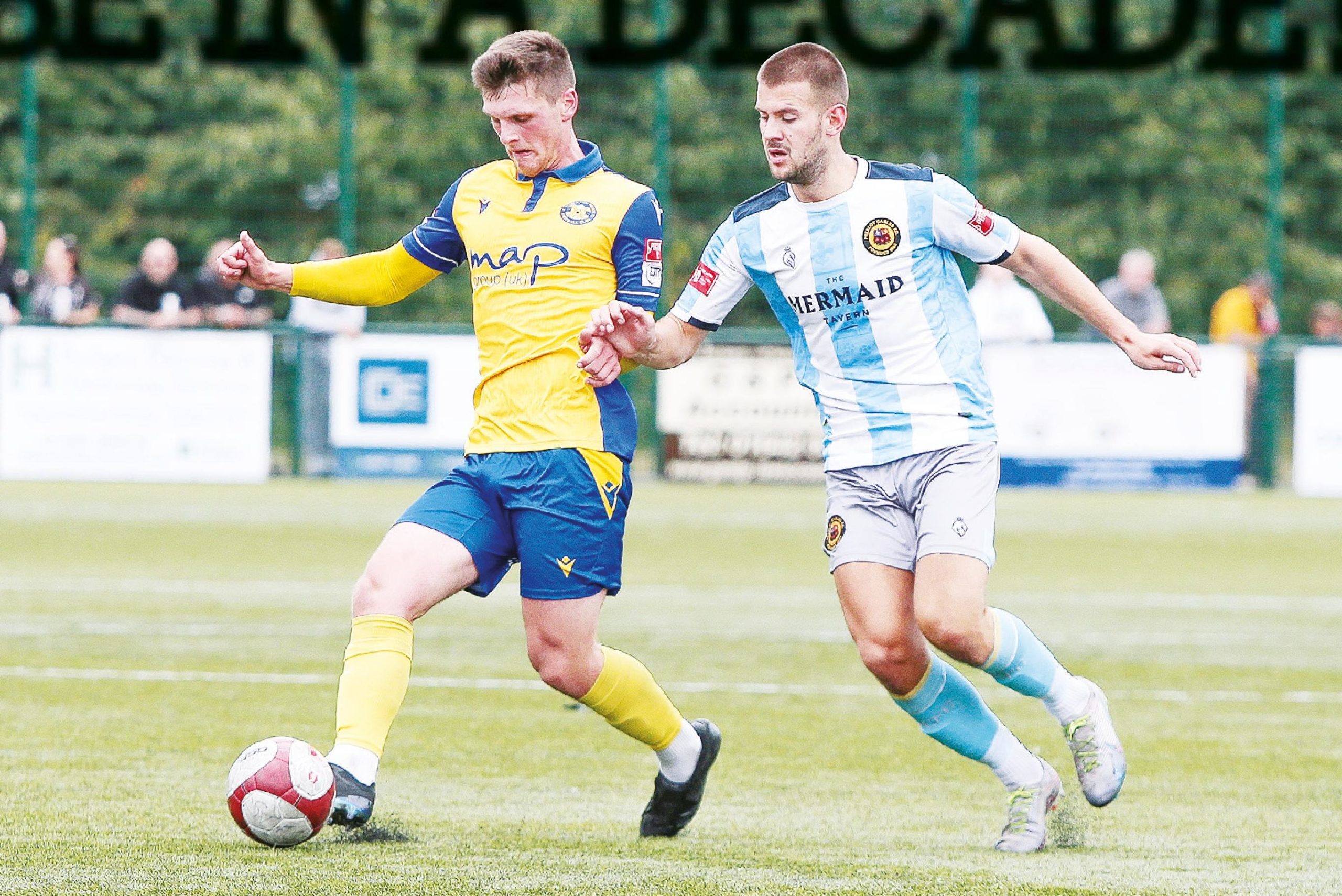
Fans can help ease burden of Non-League clubs amid energy crisis

NORTHERN PREMIER LEAGUE CHAIRMAN

THE cost of living crisis is on the minds of all but the wealthiest citizens. But what will the impact of soaring costs be on clubs, the Non-League game and fans actually be?
A recent report into the effect of the pandemic on Non-League and grass roots football found that 2,600 football clubs have folded and a further 6,000 across the UK are at risk of closure. Scary numbers, but precisely how serious is the threat?
According to the Office of National Statistics, around 60 per cent of adults report spending less on non-essential items in response to rising costs. However, there is no evidence as yet that fans will give up their weekly Non-League fix. After all, 71 per cent of Brits say the increased cost of living has not stopped them booking a foreign holiday, and 76 per cent prioritise a holiday above household bills.
Season ticket sales appear to be strong, although whether fans opt for half-season tickets instead of the full Monty remains to be seen because most fans made their purchases before the cost of living crisis really started to bite. Clubs are more likely to feel the squeeze in their bar, merchandise, and other secondary incomes. A matchday pint less or swerving the club shop can add up to a good chunk of lost revenue for clubs.
IMPACT ON CLUBS
In addition to squeezed income, clubs also face increased running costs, especially in transport and energy. On average, coach hire has doubled due to a triple whammy of fuel increases, operators trying to recoup losses incurred during lockdown and others going bust leading to fewer operators to choose from and consequently higher prices.
Household energy bills increased by a record 54 per cent in April and are likely to rise substantially again in October. One NPL club, previously paying 15p per kWh, now has to pay over 65p, taking their annual spend up to £100k.
The challenge facing clubs, as always, is striking a balance between remaining financially sustainable whilst being affordable to fans. Many are spending significant sums on player wages (£1,000 a week is no longer unheard of at Step 4), but even the best-resourced clubs are now looking anxiously at their financial commitments.
Wage caps are not the answer because they don’t work. They rely on chairs not resisting the temptation to spend more, ‘under the counter’ to win promotion. Not paying players is not only illegal but gives offenders an even more unfair advantage over other clubs.
Football finance experts predict that, in the event of another recession, clubs will have to be more careful with their spending. The clubs at most risk are the smaller professional clubs and those in Non-League. The question is whether common business sense will trump ambition.
WHAT LEAGUES ARE DOING
At Steps 3 and 4, clubs are already able to bring forward kick-off times with the agreement of their opponents. Moving from 3.00pm to, say, 12.30pm avoids the cost of floodlights and also has the benefit of enabling clubs to live stream because the game is taking place enough is open to debate, but the problem is that, once competition rules have been ratified for the season, they cannot be changed. To do so would be unfair on those clubs affected prior to change taking place. And, if anyone thinks the FA or government will step in to bridge the financial gap, they are deluded.
WHAT CLUBS CAN DO
At the end of the day, it is not the job of any League to run its individual members’ businesses. However, few clubs can afford to absorb addioutside of UEFA blackout hours.
On the other hand, parttime players may struggle to take time off work for midweek games, whilst clubs may be reluctant to set off at 7.00am to reach their destinations for a 12.30 kick-off. Either way, the decision rests with the clubs, subject to league approval being granted.
The expenses clubs can claim for the FA Cup, Trophy and Vase have also been increased. Allowable coach travel expenses have been increased by 20 per cent. Whether this is tional costs so will either need to think differently or raise admission prices.

Apart from exploring different kick-off times with their opponents, clubs will be looking at how they can keep fans in their bars and social clubs to watch televised games.
It is more important than ever that club engage with their local communities, build trust, and embed themselves in those locations. If they don’t, Non-League could easily find itself in the ‘non-essential’ rather than essential side of family budgets.
There are so many ways in which clubs can improve community engagement and, for Trident Leagues’ clubs, there is funding available to help them do so via the Trident Community Fund. The world of football finance changes when the final whistle was blown at Wembley on Sunday, and any Non-League club without a thriving girls or women’s section is missing a massive trick.
From walking football and coaching camps to line dancing, yoga, foodbanks and mental health initiative, the only limitations are clubs’ creative thinking and desire to deliver.
CREATING THE RIGHT ENVIRONMENT
The cost of living crisis must be seen in the context of the future Non-League landscape. It won’t have escaped your attention that the atmosphere at Wembley for the final of the Women’s Euros was in stark contrast to those high profile men’s games marred by pitch invasions, crowd disorder, flares, pyrotechnics, and the like.
Clubs and fans need to decide what sort of environment they want to provide. Is it one to which parents are happy to take their kids, or is Non-League impervious to the changes in society? Until now this has been one of Non-League’s USPs.
Gates may well have been up 20 pet cent last season as fans turned away from EFL to a more loosely controlled environment. That may need to change if we are to retain new fans and gain many more.



















